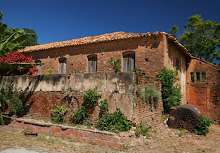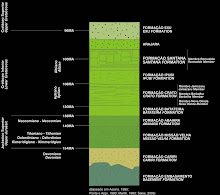
The island of Lesvos, located in the NE Aegean Sea is one of the largest Greek islands, with an area of 1630 sq. km and a shape likened to a plane tree leaf. On the western coast of Lesvos Island the passage of time and the lapping of the sea's waves have slowly revealed the petrified remains of plant life of the distant past. Intense volcanic activity, which took place in the Northern Aegean 20 million years ago, resulted in the creation of the Petrified Forest of Lesvos.
Here one can find fossilised pieces of trees - which in the remote past were once alive - standing upright or lying on the ground in a multitude of colours, with their roots and branches. Scientists who have studied the Petrified Forest speak with wonder of the uniqueness, rarity and great scientific value of the monument. The Petrified Forest provides considerable information regarding the composition and character of paleoflora and climatic conditions of the distant past.
This monument thus constitutes a natural document recording the geological history of the Aegean basin of the last 20 million years. In February 2004, UNESCO recognised the contribution of the Petrified Forest of Lesvos on geoconservation issues and included it in the UNESCO Global Geoparks Network along with all European Geoparks Network members.
The Natural History Museum of the Lesvos Petrified Forest is located in Sigri, on the western coast of the island and was founded in 1994. The Museum deals with all issues concerning the study, research, preservation, conservation and protection of the Petrified Forest (Law 2260/94). Apart from the Museum, five more visiting places were created with the necessary infrastructure, refreshment stand, pavilions and others: Lesvos Petrified Forest Geopark, Geopark of Sigh, Geopark of Plaka, Geopark of Skamniouda and Geopark of Nissiopi.
The Natural History Museum of the Lesvos Petrified Forest is located in Sigri, on the western coast of the island and was founded in 1994. The Museum deals with all issues concerning the study, research, preservation, conservation and protection of the Petrified Forest (Law 2260/94). Apart from the Museum, five more visiting places were created with the necessary infrastructure, refreshment stand, pavilions and others: Lesvos Petrified Forest Geopark, Geopark of Sigh, Geopark of Plaka, Geopark of Skamniouda and Geopark of Nissiopi.
The geopark activities on Petrified Forest of Lesvos offers a variety of different educational subjects on geology and environmental educational activities. In particular, three educational seminars that were addressed to young unemployed people were conducted the last two years in the Museum and one more is in the making.
The participation in the European Geoparks Network enforces common activities and the realization of programmes funded by the European Community such as INTERREG NIC and LEADER +, which target the application of a common strategy towards geotourism and sustainable development in rural areas.
More infomations site: http://europeangeoparks.org/
More infomations site: http://europeangeoparks.org/





Nenhum comentário:
Postar um comentário